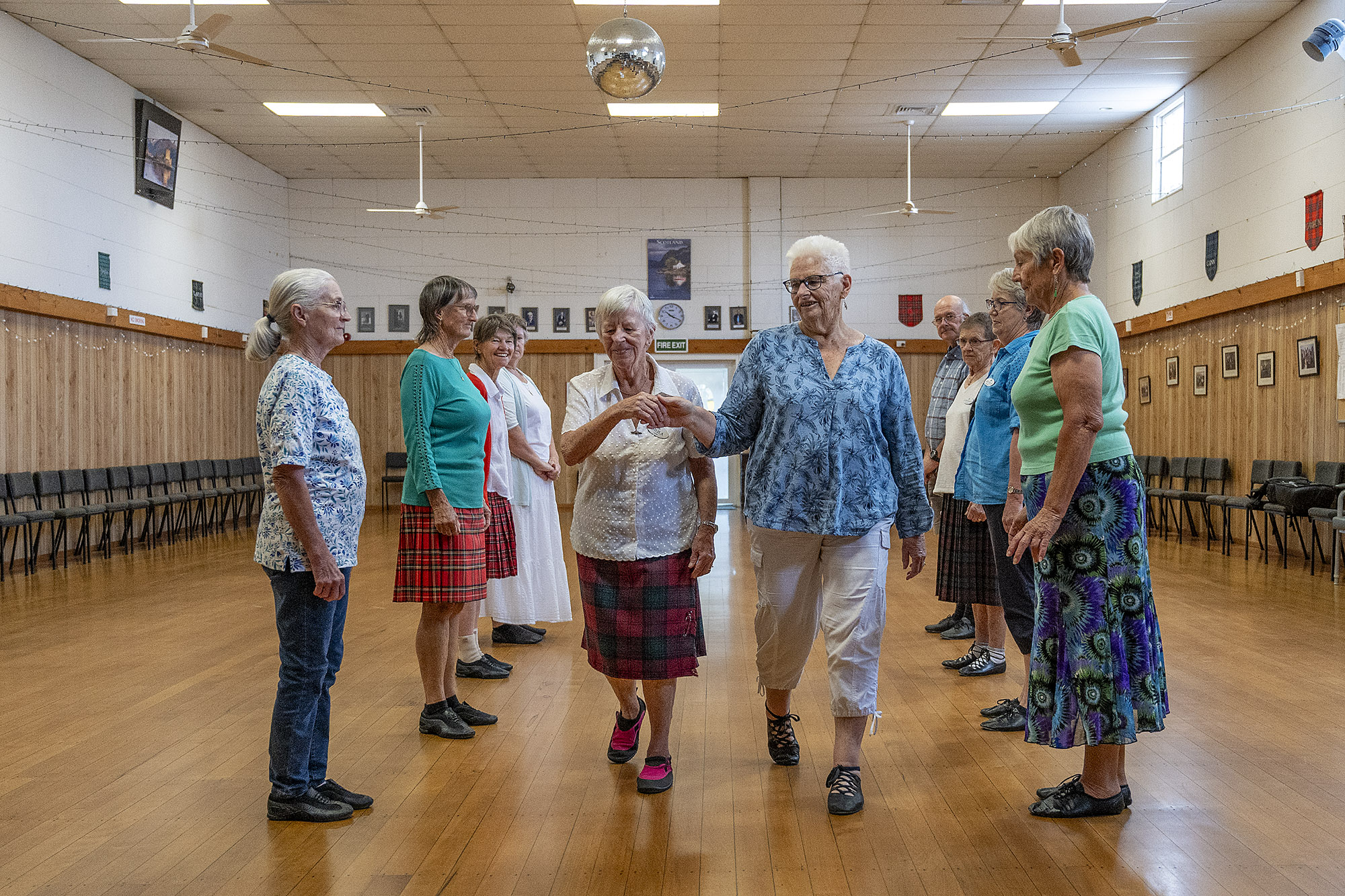Friends and fitness at Scottish dancing classes

REELY GOOD FUN: Scottish country dancers Ann Sherman, left, Anne Bailey, Lynette White, Kim Hammond, Sheila David, Jan Pyke, Ivor Wilson, Ann-Marie Hutchinson, Michele van Boheemen and Margaret Greer enjoy a class on Wednesday. Photo Troy Baker E5318-23
Kathy Forsyth
Every week, an enthusiastic group gathers in Whakatāne to enjoy the lively and social activity of Scottish country dancing.
This fun and engaging pastime has a long history in the community, with the Whakatane Scottish Country Dancing Club first established in the 1950s. After a hiatus, the club was revived two decades ago and attracts long-time dancers and newcomers – including a few children.
In March, the club launched its beginner classes and invites anyone interested in trying this enjoyable and sociable dance to join the Wednesday morning class at the Caledonian Hall. Tutor Jan Pyke and club secretary Kim Hammond are eager to welcome new faces.
“Scottish country dancing is a form of folk dance,” said Pyke, who has been dancing for 23 years, “but it is quite structured, usually performed in pairs with a group of six to eight dancers.”
Unlike Highland dancing, which many associate with Scottish dancing, Scottish country dancing involves a wide range of steps, patterns, and music, making it challenging and fun.
The Royal Scottish Country Dance Society, which oversees 90 member clubs across New Zealand, including Whakatane and Ōpotiki, notes that the dance form has gained popularity worldwide, among Scots and non-Scots alike.
There are thousands of different dances, all based on a few basic steps, set to a variety of music, from lively reels to the slower, graceful strathspeys.
“We even do Scottish country dances to carols at Christmas time,” said Hammond.
Scottish country dancing offers plenty of opportunities for social interaction.
“It’s great for friendship and staying fit,” said Hammond. “And it also exercises your chuckle muscles.”
The classes are full of laughter and camaraderie, and the social element is key – members often head out for lunch after class to continue the fun.
Each year, the club hosts a social dance, where members from various clubs around the region come together. “We send out the programme to other clubs so they can practise the dances ahead of time,” said Hammond. “Most of the clubs host one or two events a year, so there are always social dances happening.”
Anne Bailey, a club member for the past eight years, shared her love for Scottish country dancing. “I did it in the mid-80s in Mt Maunganui, and after a break, when we moved to Kawerau, I wanted to get back into it, so I joined the Whakatane club, and I’ve been here ever since.”
Bailey loves the special nature of Scottish country dancing. “It’s so interactive. With other forms of dance, like line dancing, you work solo. But with Scottish country dancing, you’re engaging with three other couples, which makes it a lot of fun.
There is much to love about this dance form, she said: “The movement, the patterns, the friendship and companionship and it is just good fun.”
She also enjoys the historical and cultural aspects. “This dance form comes from 18th-century Scotland, and it’s still commonly performed at weddings and social events there.”
Bailey also likes to wear her tartan kilt to class, adding a bit of tradition and flair to the experience.
Whether you’re a seasoned dancer or a complete beginner, the Whakatāne Scottish Country Dancing Club is always welcoming new members.
The beginner classes take place every Wednesday morning at 9:30am at the Caledonian Hall, King Street. For more information, contact Jan Pyke on 021 189 4497, or Kim Hammond on 021 112 8078 for more information.